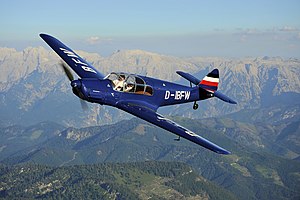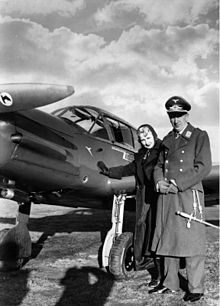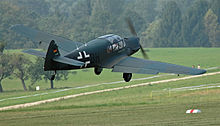
The Messerschmitt Me 210 was a German heavy fighter and ground-attack aircraft of World War II. Design started before the war, as a replacement for the Bf 110. The first examples were ready in 1939, but they proved to have unacceptably poor flight characteristics due to serious wing planform and fuselage design flaws. A large-scale operational testing program throughout 1941 and early 1942 did not cure the type's problems. The design entered limited service in 1942, but was soon replaced by the Messerschmitt Me 410 Hornisse, a further development of the Me 210. The failure of the Me 210's development program meant the Luftwaffe was forced to continue operating the Bf 110 after it had become outdated, despite mounting losses.

The Messerschmitt Bf 109 is a German World War II fighter aircraft that was, along with the Focke-Wulf Fw 190, the backbone of the Luftwaffe's fighter force. The Bf 109 first saw operational service in 1937 during the Spanish Civil War. It was still in service at the end of World War II in 1945. It was one of the most advanced fighters when it first appeared, with an all-metal monocoque construction, a closed canopy, and retractable landing gear. A liquid-cooled, inverted-V12 aero engine powered it. It was called the Me 109 by Allied aircrew and some German aces, even though this was not the official German designation.

The Messerschmitt Bf 110, often known unofficially as the Me 110, is a twin-engined Zerstörer, fighter-bomber, and night fighter (Nachtjäger) developed in Nazi Germany in the 1930s and used by the Luftwaffe during World War II. Hermann Göring was a proponent of the Bf 110, believing its heavy armament, speed, and range would make the Bf 110 the Luftwaffe’s premier offensive fighter. Early variants were armed with two MG FF 20 mm cannon, four 7.92 mm MG 17 machine guns, and one 7.92 mm MG 15 machine gun for defence. Development work on an improved type to replace the Bf 110 - the Messerschmitt Me 210 - began before the war started, but its shakedown troubles resulted in the Bf 110 soldiering on until the end of the war in various roles. Its intended replacements, the aforementioned Me 210 and the significantly improved Me 410 Hornisse, never fully replaced the Bf 110.

The Focke-Wulf Fw 58 Weihe (Harrier) was a German aircraft, built to fill a request by the Luftwaffe for a multi-role aircraft, to be used as an advanced trainer for pilots, gunners and radio operators.
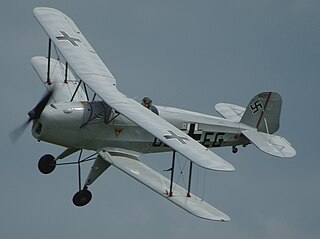
The Bücker Bü 131 Jungmann is a basic biplane trainer aircraft design and produced by the German aircraft manufacturer Bücker Flugzeugbau. It was the company's first aircraft, as well as being the final biplane to be produced in Germany.

The first Messerschmitt Me 209 was a single-engine racing aircraft which was designed for and succeeded at breaking speed records. This Me 209 was a completely new aircraft whose designation was used by Messerschmitt as a propaganda tool. Although the aircraft was designed only to break speed records, it was hoped that its name would associate it with the Bf 109 already in combat service.
The Tupolev ANT-7, known by the VVS as the Tupolev R-6, was a reconnaissance aircraft and escort fighter of the Soviet Union. The R-6 traces its roots back to early 1928 when the Soviet Air Force needed a long-range multirole aircraft. The requirements were that it could be used for long-range transport, defensive patrolling, reconnaissance, light bombing and torpedo attack.

The Argus As 10 was a German-designed and built, air-cooled 90° cylinder bank-angle inverted V8 "low power" aircraft engine, used mainly in training aircraft such as the Arado Ar 66 and Focke-Wulf Fw 56 Stösser and other small short-range reconnaissance and communications aircraft like the Fieseler Fi 156 Storch during, and shortly after World War II. It was first built in 1928.
The Klemm Kl 151 was a German prototype light passenger aircraft designed by Dr. Hanns Klemm and chief engineer Carl Bucher during World War II. Only one model was built.

The Morane-Saulnier M.S.225 was a French fighter aircraft of the 1930s. It was produced in limited quantities to be used as a transitional aircraft between the last of the biplanes and the first monoplane fighters.

The Potez 540 was a French multi-role aircraft of the 1930s. Designed and built by Potez, it served with the French Air Force as a reconnaissance bomber, also serving with the Spanish Republican Air Force during the Spanish Civil War. Although obsolete as a bomber, it remained in service in support roles and in France's overseas colonies at the start of World War II.

The Caudron C.440 Goéland ("seagull") was a six-seat twin-engine utility aircraft developed in France in the mid-1930s.

The Fieseler Fi 97 was a 1930s German four-seat cabin touring and competition monoplane aircraft designed and built by the German manufacturer Fieseler.
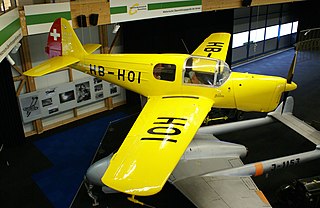
The Nord 1200 Norécrin is a French two or three-seat cabin monoplane designed and built by Nord Aviation.
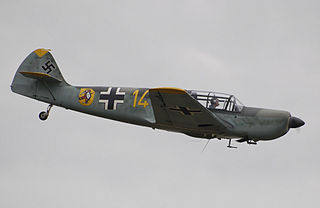
The Nord Pingouin was a French-built, re-engined Messerschmitt Bf 108 Taifun produced by SNCAN.

The Nord 1100 Noralpha was a French-built and re-engined Messerschmitt Bf 108 produced by Nord Aviation.

The Klemm Kl 36 is a 1930s German four-seat cabin touring and competition monoplane. It was designed by Klemm and Friedrich Fechner and built by Klemm.

The Starck AS-70 Jac is a French-built single-seat light aircraft of the mid-1940s.
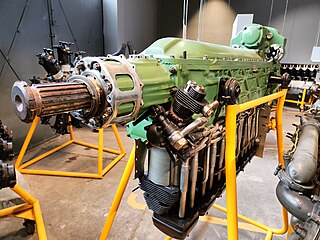
The Renault 6Q, also called the Renault Bengali 6, is an air-cooled inverted in-line six-cylinder, aircraft piston engine, producing about 160 kW (220 hp) continuous power. It was designed and built in France and produced for more than ten years after its homologation in 1936, with large numbers built during World War II.

The Argus As 17 was an air cooled six-cylinder in-line aircraft engine designed by the German engineering company Argus Motoren in the 1930s. Developed from the same company's smaller As 8, the engine was produced in ratings between 200 and 280 hp. First demonstrated in 1934, it powered a number of competitors at the Challenge International de Tourisme that year, including the Messerschmitt Bf 108. Argus produced it in small numbers as German manufacturers like Messerschmitt preferring V-8 alternatives for their aircraft.
